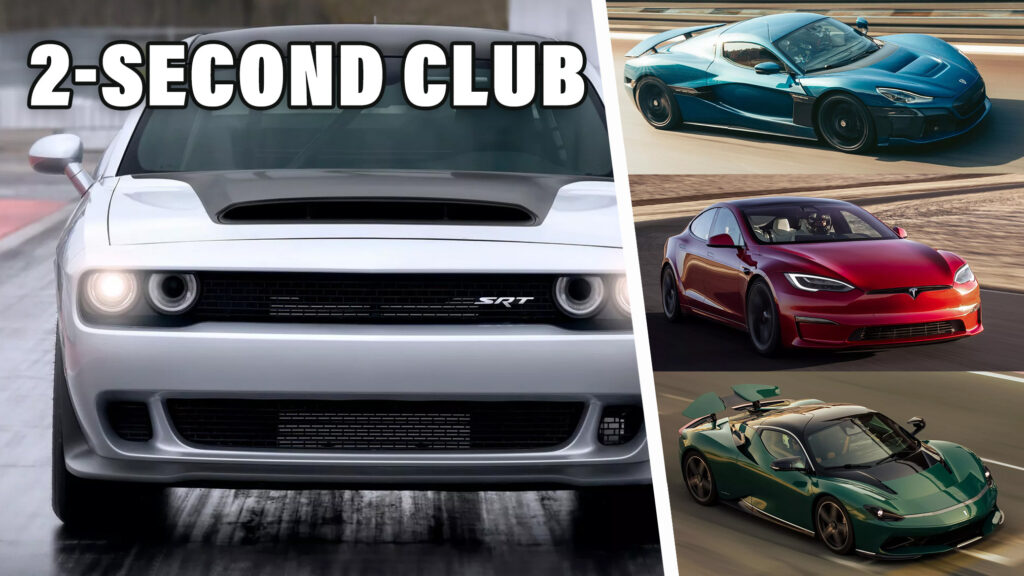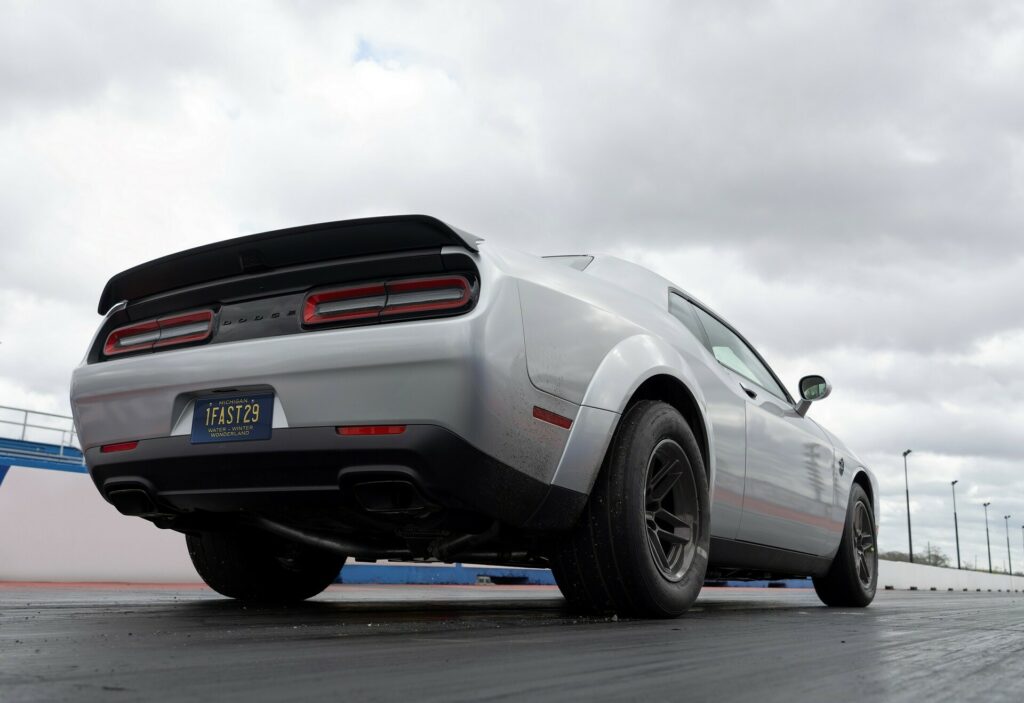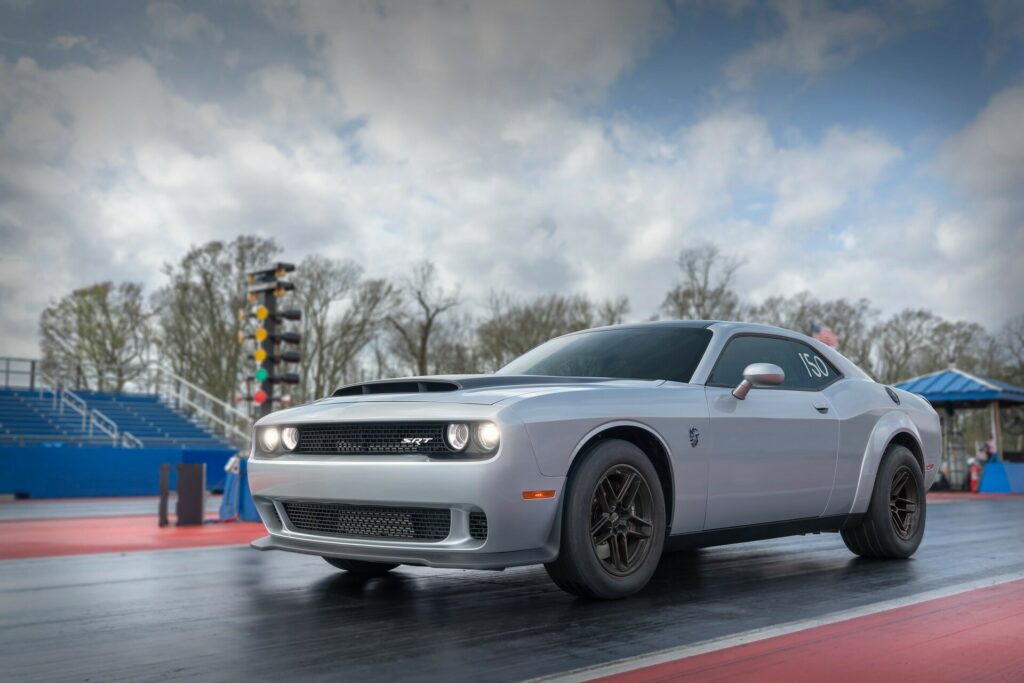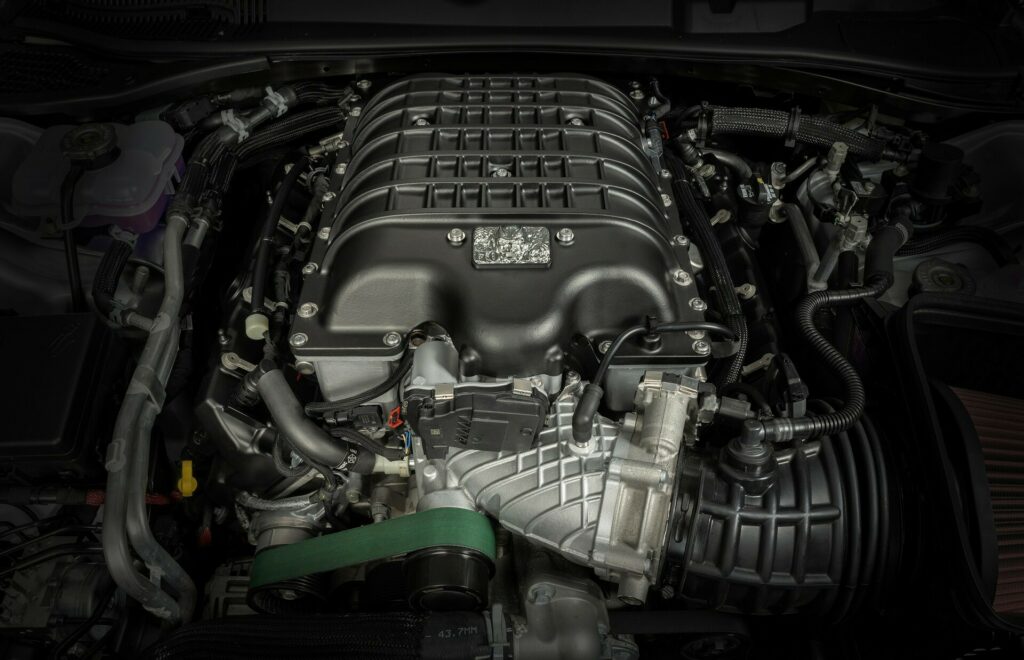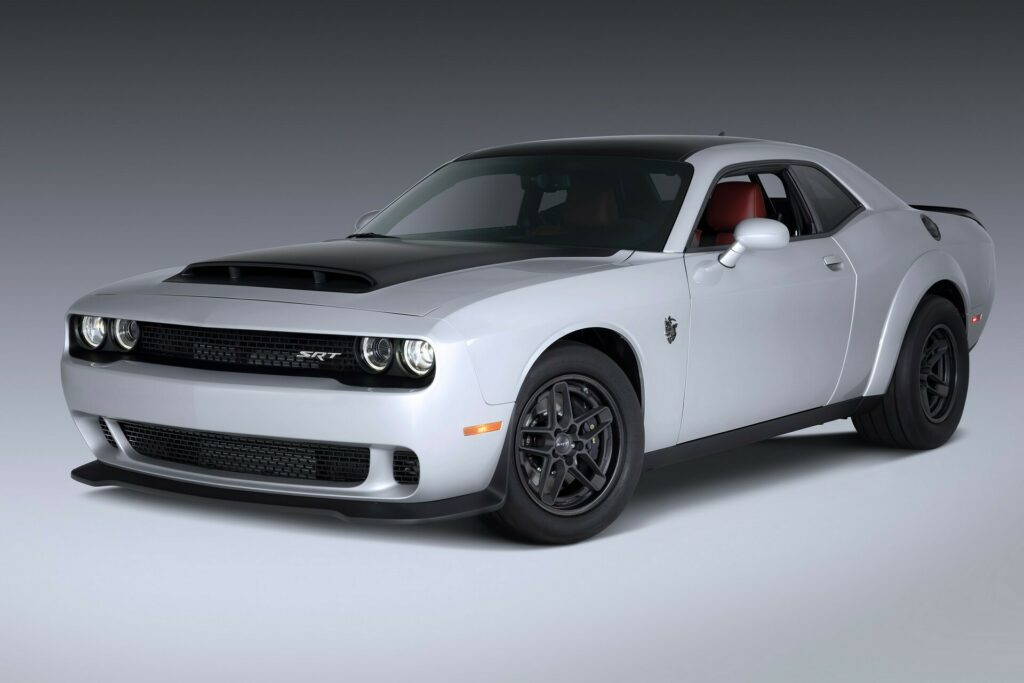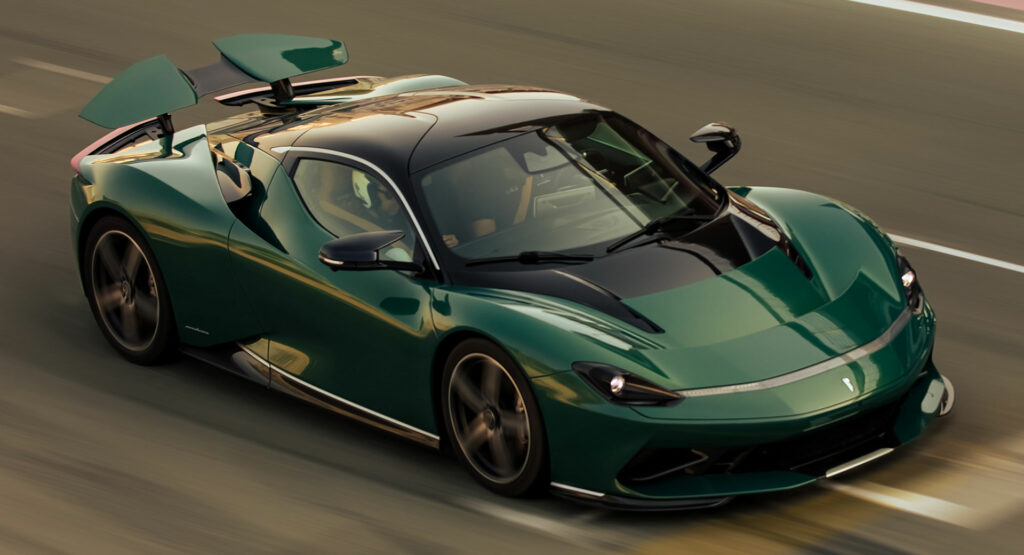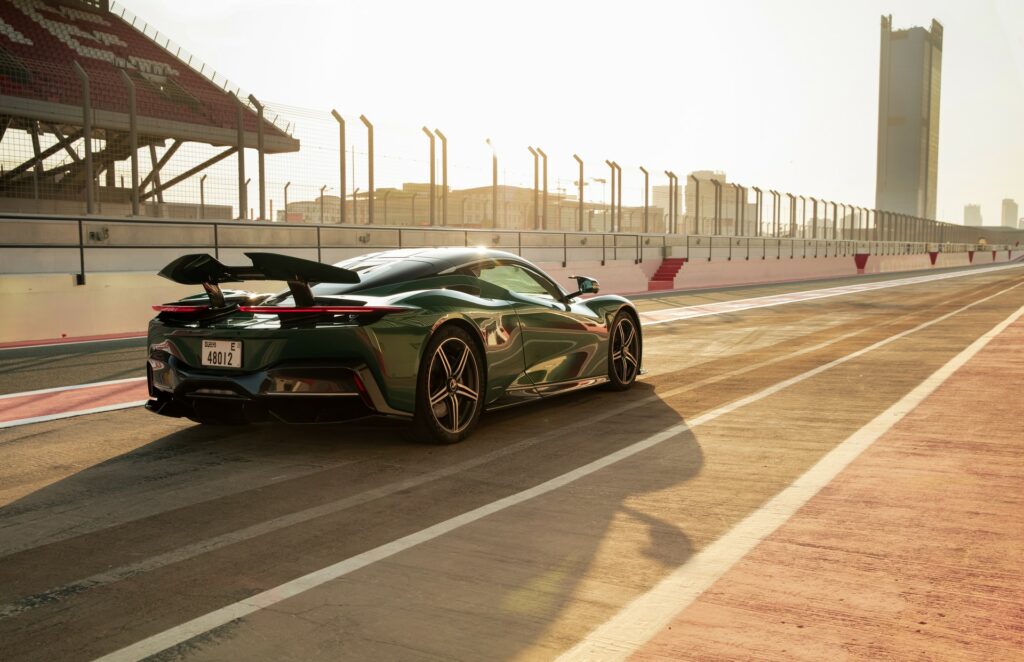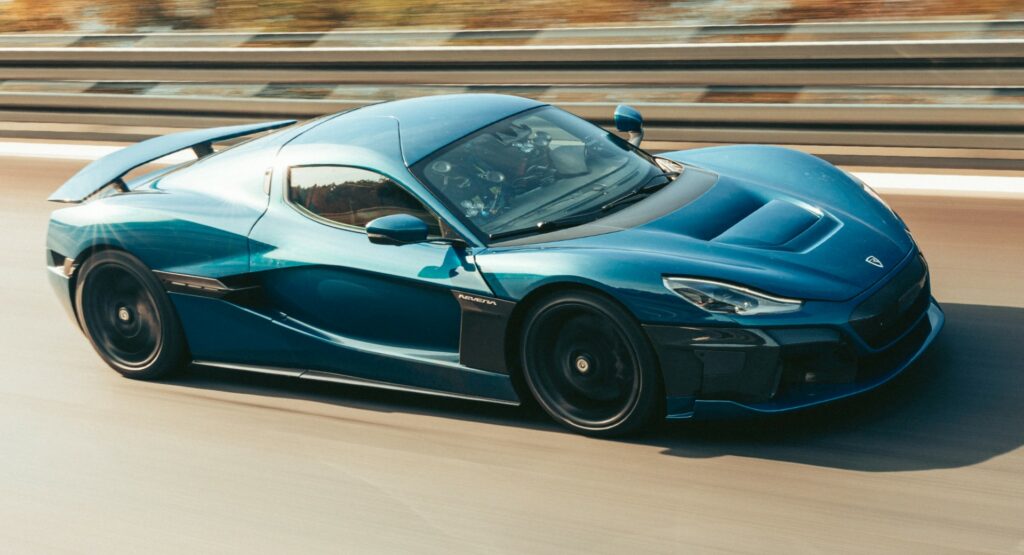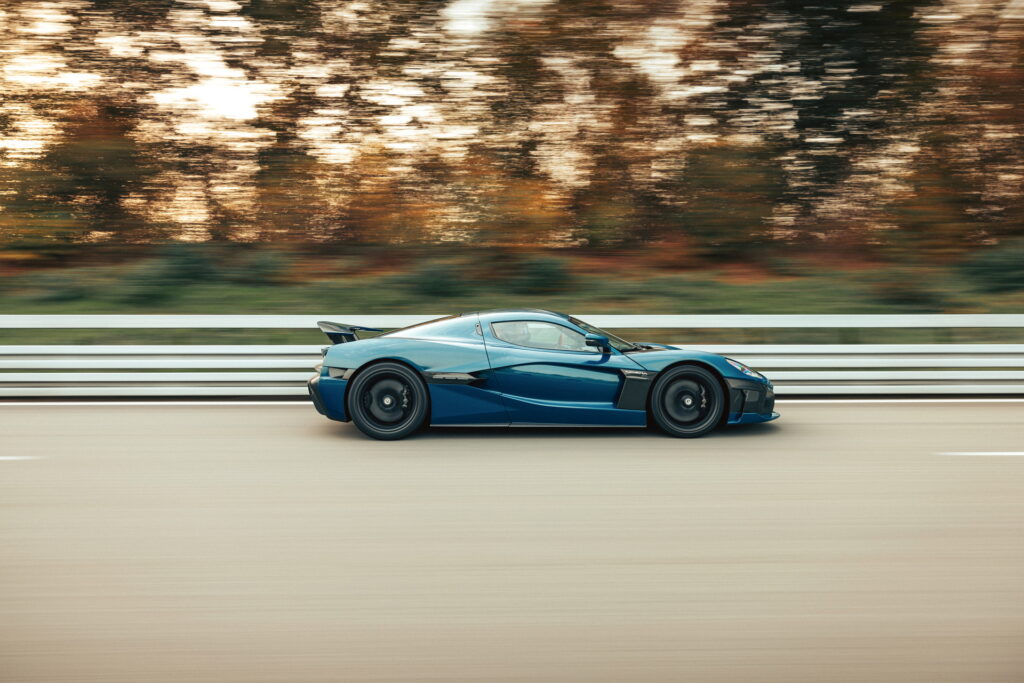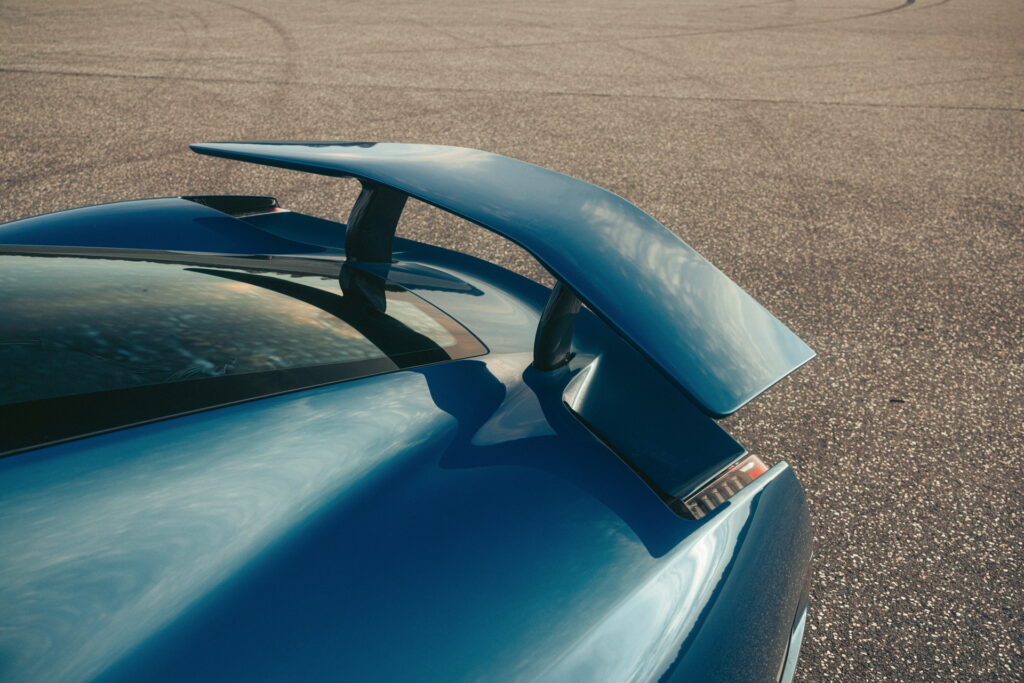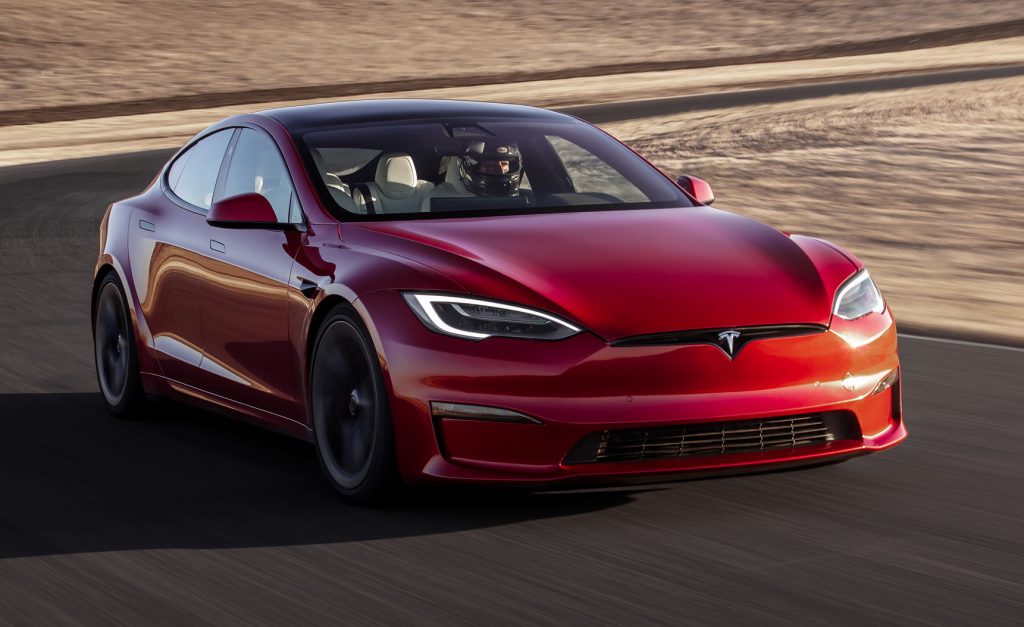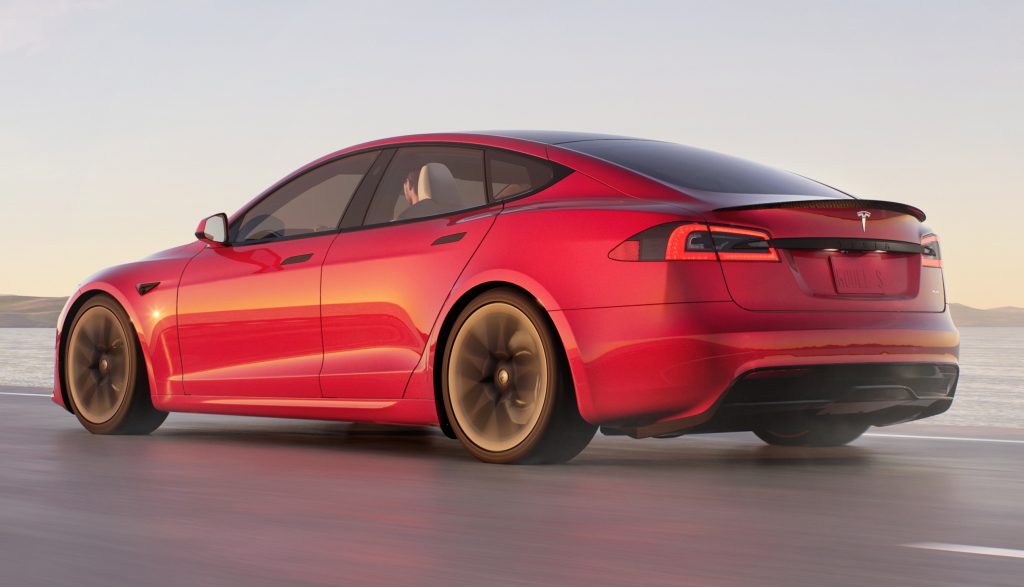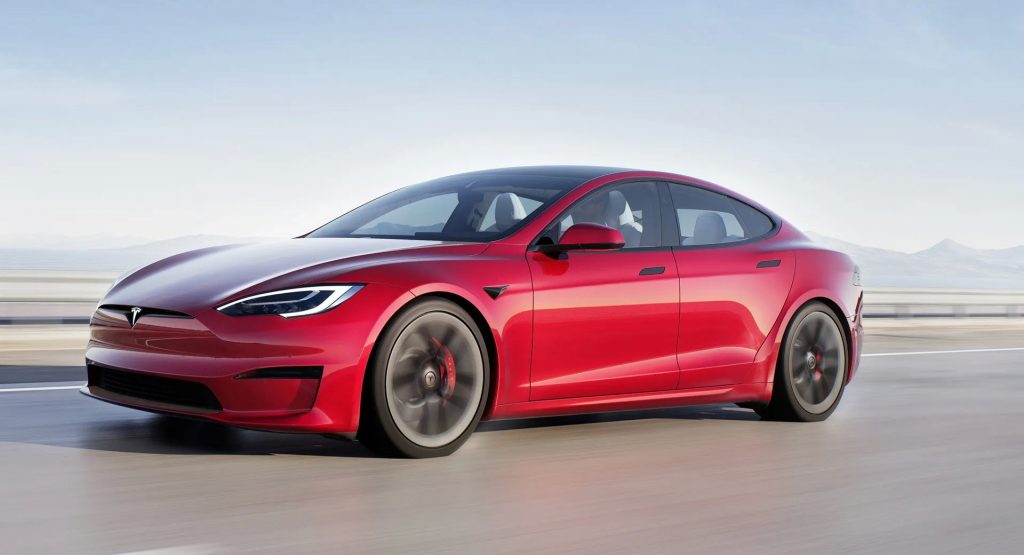The Dodge Challenger SRT Demon 170’s performance numbers would be staggering at any price point. If it was a $10 million electric hypercar we’d all still be getting giddy over its 1.66-second zero to 60 mph (96 km/h) which Stellantis confirmed includes a rollout, and 8.91-second quarter mile times.
But even more amazing than those stats, or the fact that they came from a rear-wheel drive car with four proper seats, is the Challenger’s price-to-performance ratio. The 1,025 hp (1,039 PS) Demon 170 costs $96,666, which isn’t beer money for most of us, but it is a steal considering how much performance it buys.
Related: 1,025 HP Dodge Challenger SRT Demon 170 Opens The Gates Of Hell
Only three other production cars either claim, or have been proven in independent tests, to be capable of getting to 60 mph in less than 2 seconds, and two of those cars cost 20 times more than the Dodge. Crucially, none of them has a combustion engine.
Pininfarina Battista – 1.79 seconds – $2.2 million
The resurrected Pinfarina’s Battista hypercar is based on the blisteringly fast Rimac Nevera EV, but it’s even quicker. The Battista’s four electric motors develop a combined 1,874 hp (1900 PS) and 1,726 lb-ft (2,340 Nm), and during tests where the car was equipped with Michelin Pilot Sport Cup 2R tires it recorded zero to 60 mph in 1.79 seconds (1.86 seconds to 100 km/h) and completed the quarter mile in 8.55 seconds.
Like the Dodge’s stats, the Battista’s acceleration numbers were recorded as they would be in drag racing and exclude 1 ft of roll-out at the start. American auto magazine record their numbers the same way, whereas UK mags and most automakers, including BMW, Ferrari and Porsche, record their acceleration times from stationary, which means they’re slightly slower.
Rimac Nevera – 1.85 seconds – $2.2 million
The Rimac Nevera is fractionally more powerful than its Pininfarina Battista sister, but also slightly slower against the clock. In Rimac guise the quad-motor drivetrain develops 1,888 hp (1,914 PS) and 1,741 lb-ft (2,360 Nm), but the Croatian hypercar requires 1.85 seconds to reach 60 mph (1.97 seconds to 100 km/h) and 8.6 seconds to pass the quarter mile marker. Those times were recorded on a high-friction, prepped surface and exclude 1 ft of roll-out, by the way.
Tesla Model S Plaid – 1.99 seconds – $109,990
Tesla also used an incredibly sticky drag strip surface and rollout-subtraction to record the 1.99-second zero to 60 mph for its 1,020 hp (1,034 PS), all-wheel drive, tri-motor, Model S Plaid. When Car & Driver tested the the Plaid on regular pavement it required 2.1-seconds to reach that yardstick and 9.4 seconds for the quarter mile, again omitting 1 ft of rollout, which was calculated to be worth 0.2 seconds.
And there are even more Plaid caveats: achieving those times requires the car to be in Drag Strip mode, which involves heating the battery to the optimum temperature and can take several minutes. By the time you’ve gone through that malarkey at the stoplights on main street the minivan that was in the next lane will have disappeared over the horizon.
So the big-value $110k Model Plaid isn’t quite as rapid as the Demon 170, but it’s still monstrously fast, and let’s not forget that the Dodge’s numbers come with an asterisk too, because they were also recorded on a sticky surface, minus the rollout and with the engine running on E85 fuel. Fill the tank with E10 instead and the power output falls from 1,025 hp (1,039 PS) to 900 hp (913 PS) and torque drops from 945 lb-ft (1,280 Nm) to 810 lb-ft (1,097 Nm).
Whether the Demon can still go sub-2 to 60 mph in that configuration, Dodge isn’t saying, but as the only combustion car here we’re pretty confident that a wheelstanding, V8-bellowing zero to 60 mph run in the 170 is a heap more exciting than doing the same in an EV, whatever the stopwatch says.








